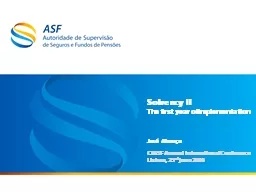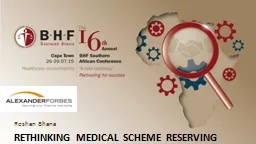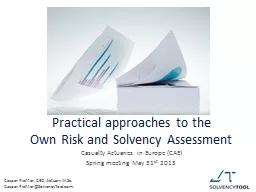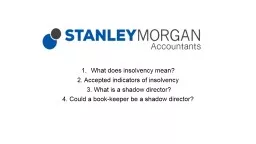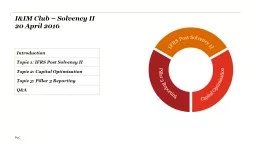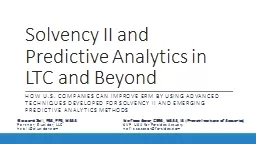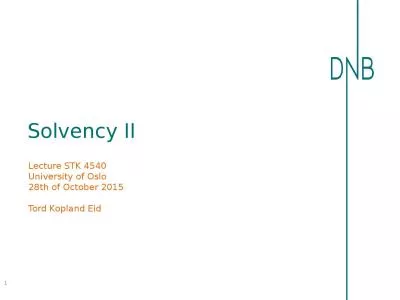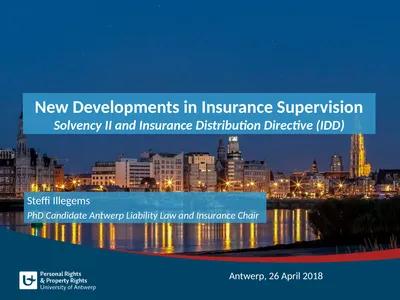PPT-Solvency II
Author : kittie-lecroy | Published Date : 2017-11-01
The first year of implementation José Almaça CIRSF Annual International Conference Lisboa 23 rd june 2016 2 Agenda Solvency II key features Solvency II implementation
Presentation Embed Code
Download Presentation
Download Presentation The PPT/PDF document "Solvency II" is the property of its rightful owner. Permission is granted to download and print the materials on this website for personal, non-commercial use only, and to display it on your personal computer provided you do not modify the materials and that you retain all copyright notices contained in the materials. By downloading content from our website, you accept the terms of this agreement.
Solvency II: Transcript
Download Rules Of Document
"Solvency II"The content belongs to its owner. You may download and print it for personal use, without modification, and keep all copyright notices. By downloading, you agree to these terms.
Related Documents

